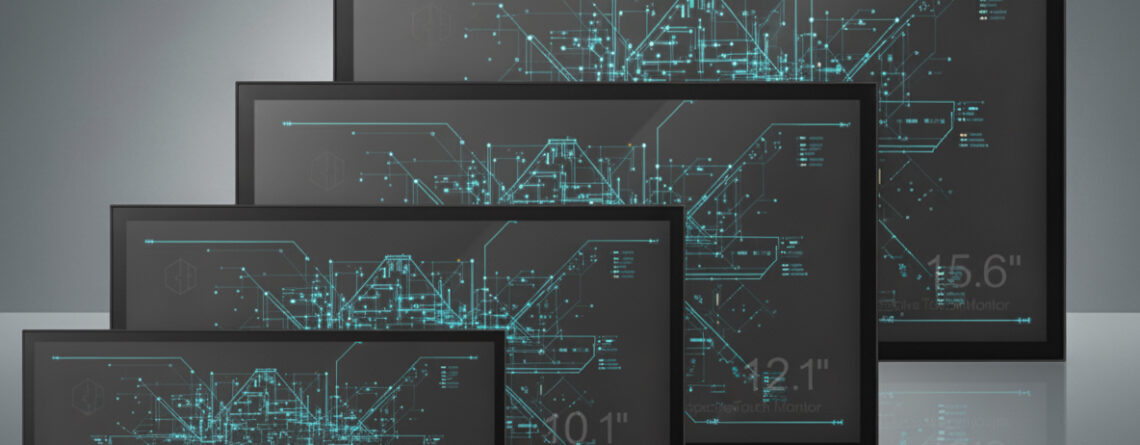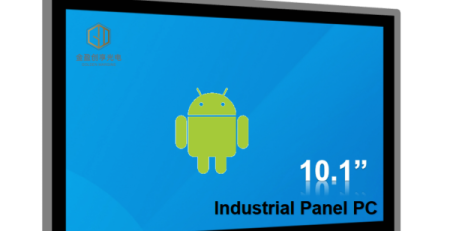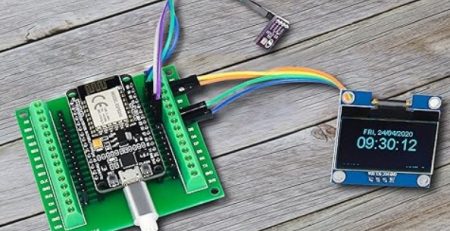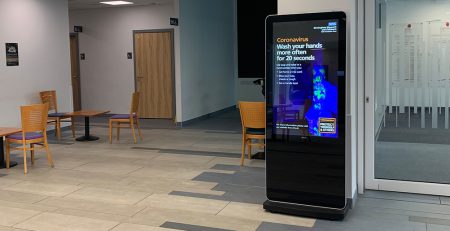In the golden age of the explosive growth of electric vehicle charging infrastructure, charging stations are no longer simple energy replenishment points but core interactive nodes connecting users, energy, and commerce. However, in public spaces, charging stations face severe durability tests. At this point, the IK10 protection rating—a robust standard capable of withstanding 20 joules of impact (equivalent to a 5kg weight falling from a height of 40cm)—has become a non-negotiable benchmark for public charger Human-Machine Interfaces (HMI).
This article delves into how, under the rigid requirement of IK10, the HMI display sizes in the electric vehicle charger market have formed the current landscape and are undergoing a strategic shift towards larger and smarter directions.
I. Market Status Quo: The Quadrupartite Standoff of Four Dominant Sizes
The current market is not monopolized by a single size but is clearly divided into four dominant tiers based on charger type, cost structure, and functional requirements:
1. 7-inch: The Compact and Practical Value Choice
- Positioning: Primarily used in compact DC wall-mounted charging boxes or public AC stations, focusing on cost control.
- Advantages: Maximizes cost and volume control while meeting basic functions like status display and user authentication. It is one of the most economical choices to achieve the IK10 protection threshold.
2. 10.1-inch: The Current Market “Workhorse”
- Positioning: The absolute dominant size for global public DC fast chargers, the sales leader.
- Advantages: Strikes the best balance between display area, user experience, manufacturing cost, and the engineering difficulty of achieving IK10 protection. It provides sufficient space to clearly display charging status, power, cost, and payment processes, and is widely adopted by mainstream global manufacturers.
3. 12.1-inch: The Balanced Choice for the Mid-to-High-End Market
- Positioning: An important supplementary size between mainstream and high-end, offering an option for projects seeking better user experience with limited budgets.
- Advantages: Offers about 40% more display area than the 10.1-inch, allowing more comfortable display of complex information, while the cost of achieving IK10 protection is significantly lower than the 15.6-inch, finding a new balance between function and cost.
4. 15.6-inch: The Emerging High-End Interaction Standard
- Positioning: Aimed at high-end DC fast chargers, supporting rich interaction and preliminary advertising integration – the future-proof choice.
- Advantages: The larger screen provides a “more artistic and modern” user experience, leaving ample space for complex graphical interfaces, multi-language selection, and future integration of digital outdoor advertising. It is rapidly becoming the design benchmark for next-generation high-power charging stations.
| Size/Type | Advantages | Disadvantages / Application Scenarios | Primary Market |
| 15.6-inch | – Strongest visual impact, suitable for video ads – Richest information display, suitable for maps/payment interfaces – Mature supply chain, cost significantly reduced – Aligns with the large-screen trend |
– Has certain requirements for power consumption and heat dissipation – Relatively large physical size |
Dominant market, especially in Asia. Commonly used in high-end or new-generation products from brands like Telai, Star Charge, ChargePoint, ABB, Schneider. |
| 12.1-inch | – High industrial-grade reliability, durable – Stable cost, mature technology – Lower power consumption, less strain on the charger power system – Moderate size, flexible application |
– Display area and visual effect inferior to 15.6-inch – Not suitable for complex multimedia content |
Very stable existing market and technology reserve. Very common in European/American markets, as well as in industrial scenarios that require extreme stability. Widely used in mid-range or standard product lines. |
| 10.1-inch & Below | – Low cost – Small power consumption – Compact structure, space-saving |
– Limited display content, poorer user experience – Does not support complex ads and interaction – Gradually being phased out |
Primarily used in early charging stations or in extremely cost-sensitive, low-end products. Largely absent in new mainstream public charging station markets. |
| 7-inch | – Golden balance between cost and experience – Very low power consumption, compact structure – Supports core functions (scanning, info display) |
– Cannot host video ads and complex interactions – Insufficient visual experience and premium feel |
Rapidly growing value-for-money market: – Standard for basic AC slow chargers – Screen replacement for old stations – New projects are sensitive to cost. |
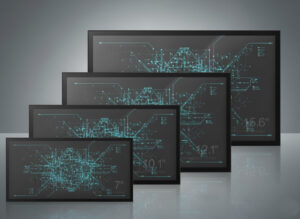
II. Core Driver: Why IK10 is the “Lifeline” for Public Chargers
The Cornerstone of Safety and Compliance
Public charging stations are filled with high-voltage direct current, making their enclosures and display screens the first line of defense for user safety. The IK10 rating ensures that even under malicious vandalism or accidental severe impact, the structural integrity of the HMI remains uncompromised, thereby preventing exposure of internal high-voltage components and meeting stringent international safety standards.
Key to Operational Cost and Reliability
For charging station operators, every equipment failure means lost revenue and expensive repair costs. IK10 protection significantly reduces downtime caused by screen damage, ensures the reliable operation of the charging network, and directly improves the return on investment.
Key Technologies for Achieving IK10:
- Thickened Tempered Glass: Typically uses 4mm to 10mm thick tempered cover glass to resist impact.
- Optical Bonding Technology: This process seamlessly bonds the touch screen and display layer, which not only reduces glare and improves visibility in sunlight but also enhances the overall structural rigidity. It is the core process for achieving high-standard IK10 protection.
III. Future Trends (2025-2030): Larger Screens and Monetization
The market is evolving in two clear directions:
- Size Upgrade for Functional HMIs: From 10.1-inch to 12.1/15.6-inch
As charging protocols evolve (e.g., OCPP 2.0.1, ISO 15118), chargers need to handle more complex vehicle-to-grid communication, dynamic electricity price display, and detailed data visualization. The 12.1-inch becomes the preferred choice for a cost-effective upgrade, while the 15.6-inch screen provides the necessary canvas for high-end applications and is set to become the new standard for high-end DC fast chargers in the coming years.
- Integration of Extra-Large Advertising Screens: Creating New Revenue Models
The inherent “waiting scenario” of charging stations makes them excellent advertising platforms. A new design paradigm is gaining popularity: the “Dual-Screen Architecture.”
- Interaction Screen: A 10.1, 12.1, or 15.6-inch IK10 touchscreen dedicated to charging operations, placed at an ergonomically reasonable height.
- Advertising Screen: An integrated 21.5-inch or even 55-inch extra-large screen with IK10 protection, positioned above, dedicated to playing advertisements and content, creating ongoing digital-out-of-home advertising revenue for operators to offset high equipment investment.
IV. Strategic Advice: Action Guide for Charging Ecosystem Participants
1. For Charging Station Manufacturers:
- Mainstream Product Lines: Continue to position the 10.1-inch IK10 display as the cost-effective standard for high-volume DC fast chargers.
- High-end/Next-gen Products: Decisively adopt the 15.6-inch IK10 display as the design standard for new platforms to capture the high ground of the market.
2. For Charging Station Operators:
- When considering a cost-effective upgrade, the 12.1-inch offers an ideal intermediate choice.
- When procuring high-power chargers, prioritize models equipped with 15.6-inch or larger HMIs to enhance user experience and future adaptability.
- In high-traffic commercial locations, actively evaluate charging station solutions integrated with extra-large advertising screens, considering them as important revenue-generating assets.
3. For Investors and Industry Observers:
- Focus on charging equipment companies with mature solutions in IK10 large-size display technology and digital advertising monetization models, as they represent future growth directions.
- Monitor the penetration rate changes of the 12.1-inch size in medium-power chargers (60-120kW), which reflects the market’s increasing demand for user experience.
In the hot field of electric vehicle chargers, the competition for IK10 HMI displays goes far beyond size itself; it is a comprehensive contest involving durability, user experience, and business models. Currently, the 10.1-inch remains the market’s mainstay, the 12.1-inch is becoming an important supplementary force, and the 15.6-inch is defining the future at an unprecedented pace. From 7-inch to 15.6-inch, each size plays an irreplaceable role in its specific market segment. Selecting the right screen size for an EV charger is crucial for optimizing human-machine interaction. Goldenmargins, with deep insights into industry needs, offers a diverse range of screen solutions from compact to full-featured models. We are committed to integrating complex technology into intuitive experiences, ensuring your product gets the perfect match. To select the ideal screen for your application, feel free to contact Goldenmargins – your professional partner.


